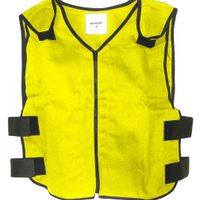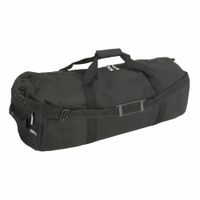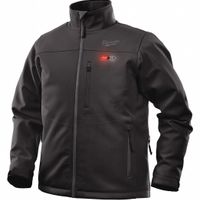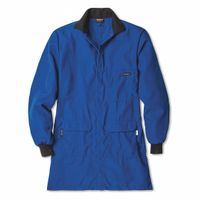Call +(254) 703 030 000 / 751 483 999 / 721 704 777
.....Read More
Frequently Asked Questions
What are the best materials for workwear in extreme cold conditions?
The best materials for workwear in extreme cold conditions are those that provide excellent insulation, moisture-wicking properties, durability, and comfort. Key materials include:
1. **Wool**: Known for its natural insulating properties, wool retains heat even when wet. Merino wool, in particular, is soft, breathable, and effective at regulating body temperature.
2. **Down**: Made from the fine feathers of ducks or geese, down is highly effective at trapping heat. It is lightweight and compressible, making it ideal for layering. However, it loses insulating properties when wet, so it should be paired with water-resistant outer layers.
3. **Synthetic Insulation**: Materials like Thinsulate, PrimaLoft, and Polartec offer excellent warmth-to-weight ratios and maintain insulation when wet. They are often used in jackets and gloves for their quick-drying properties.
4. **Fleece**: Made from polyester, fleece is lightweight, breathable, and provides good insulation. It is often used as a mid-layer due to its ability to wick moisture away from the body.
5. **Gore-Tex**: This waterproof, windproof, and breathable fabric is ideal for outer layers. It protects against harsh weather while allowing moisture to escape, keeping the wearer dry and comfortable.
6. **Cotton**: While not ideal for extreme cold due to its tendency to retain moisture, cotton blends can be used in base layers if combined with other insulating materials.
7. **Nylon and Polyester**: These synthetic fibers are durable, water-resistant, and often used in outer shells to protect against wind and moisture.
Layering these materials effectively—starting with moisture-wicking base layers, insulating mid-layers, and protective outer layers—ensures optimal warmth and comfort in extreme cold conditions.
How do chemical warmers work in gloves and shoes?
Chemical warmers in gloves and shoes work through exothermic chemical reactions, primarily involving the oxidation of iron. These warmers typically contain a mixture of iron powder, salt, activated charcoal, water, and vermiculite or sawdust. When exposed to air, the iron powder reacts with oxygen in a process called oxidation, forming iron oxide (rust) and releasing heat in the process.
The salt acts as a catalyst, speeding up the reaction, while the activated charcoal helps distribute the heat evenly. Vermiculite or sawdust serves as an insulator, retaining the heat and prolonging the warming effect. The water in the mixture is crucial as it facilitates the oxidation process by providing a medium for the ions to move, enhancing the reaction rate.
These components are sealed in a breathable pouch that allows air to enter but prevents the contents from spilling out. Once the seal is broken and the pouch is exposed to air, the oxidation process begins, and heat is generated. The warmth typically lasts for several hours, depending on the specific formulation and environmental conditions.
The design of these warmers ensures they are safe for use in direct contact with skin, as the temperature is regulated to prevent burns. They are disposable and intended for single use, making them convenient for outdoor activities in cold weather.
What are the benefits of cooling vests in hot work environments?
Cooling vests offer several benefits in hot work environments, enhancing both safety and productivity. They help regulate body temperature, reducing the risk of heat-related illnesses such as heat exhaustion and heat stroke. By maintaining a cooler core temperature, workers can sustain their energy levels and focus, leading to improved performance and efficiency.
These vests are designed to be lightweight and comfortable, allowing for ease of movement without adding significant bulk or weight. This is crucial in environments where physical activity is high, as it ensures that workers can perform their tasks without restriction.
Cooling vests also contribute to overall comfort, which can improve morale and reduce stress. When workers feel more comfortable, they are less likely to experience fatigue, which can decrease the likelihood of accidents and errors. This is particularly important in industries where precision and attention to detail are critical.
Additionally, cooling vests can be a cost-effective solution for employers. By reducing the incidence of heat-related illnesses, companies can decrease medical expenses and minimize downtime due to worker illness. This can lead to increased productivity and lower operational costs.
Furthermore, cooling vests can be used in conjunction with other personal protective equipment (PPE), ensuring that workers remain protected while benefiting from temperature regulation. This adaptability makes them suitable for a wide range of industries, including construction, manufacturing, and outdoor labor.
In summary, cooling vests provide essential benefits in hot work environments by enhancing safety, comfort, and productivity, while also offering a cost-effective solution for employers.
How long do the batteries last in electronically heated workwear?
The battery life in electronically heated workwear varies based on several factors, including the type of garment, the battery capacity, the heat settings used, and the environmental conditions. Typically, these garments are equipped with rechargeable lithium-ion batteries, which are favored for their energy density and longevity.
1. **Battery Capacity**: Most heated workwear comes with batteries ranging from 2000mAh to 10,000mAh. Larger capacity batteries generally provide longer heating times.
2. **Heat Settings**: Heated workwear usually offers multiple heat settings, such as low, medium, and high. On a low setting, the battery can last anywhere from 6 to 12 hours. On medium, it might last between 4 to 8 hours, and on high, the duration could be reduced to 2 to 4 hours.
3. **Environmental Conditions**: Colder environments may cause batteries to deplete faster as they work harder to maintain the desired temperature. Conversely, in milder conditions, the battery may last longer.
4. **Garment Type**: Different garments, such as jackets, vests, gloves, or pants, may have varying power requirements. For instance, a heated jacket with multiple heating zones might consume more power than a pair of heated gloves.
5. **Battery Age and Maintenance**: Over time, battery performance can degrade, reducing the effective heating duration. Proper maintenance, such as regular charging and avoiding extreme temperatures, can help prolong battery life.
In summary, the battery life of electronically heated workwear can range from 2 to 12 hours, depending on the factors mentioned above. Users should consider their specific needs and conditions to choose the appropriate garment and battery capacity for optimal performance.
What are the key features to look for in general-purpose work jackets?
When selecting a general-purpose work jacket, consider the following key features:
1. **Material**: Opt for durable materials like cotton duck, canvas, or polyester blends that offer resistance to wear and tear. Water-resistant or waterproof fabrics are beneficial for outdoor work.
2. **Insulation**: Depending on the climate, choose jackets with appropriate insulation. Lightweight insulation is suitable for mild conditions, while heavier insulation is necessary for colder environments.
3. **Fit and Comfort**: Ensure the jacket allows for a full range of motion. Features like articulated sleeves, adjustable cuffs, and a bi-swing back enhance mobility and comfort.
4. **Durability**: Reinforced stitching, double-layered fabric in high-wear areas, and robust zippers or closures contribute to the jacket's longevity.
5. **Pockets and Storage**: Multiple pockets, including interior, chest, and hand-warmer pockets, provide convenient storage for tools and personal items.
6. **Weather Protection**: Look for features like storm flaps, adjustable hoods, and high collars to protect against wind and rain.
7. **Breathability**: Ventilation options, such as underarm vents or breathable fabrics, help regulate body temperature during physical activity.
8. **Safety Features**: Reflective strips or high-visibility colors enhance safety in low-light conditions.
9. **Ease of Maintenance**: Machine-washable jackets with stain-resistant finishes simplify cleaning and maintenance.
10. **Versatility**: A versatile design that suits various work environments and can transition from work to casual settings is advantageous.
11. **Brand Reputation**: Consider reputable brands known for quality and durability in workwear.
12. **Cost**: Balance cost with features and durability to ensure value for money.
By focusing on these features, you can select a work jacket that meets your needs for durability, comfort, and functionality.
How should medical scrubs be maintained for hygiene?
To maintain medical scrubs for optimal hygiene, follow these guidelines:
1. **Separate Washing**: Always wash scrubs separately from other clothing to prevent cross-contamination. Use a dedicated laundry bag for transporting them.
2. **Pre-Treatment**: Address stains immediately with a stain remover or a mixture of water and detergent. For biological stains, use cold water to prevent setting.
3. **Hot Water Wash**: Use the hottest water temperature safe for the fabric to kill bacteria and viruses. Typically, this is around 60°C (140°F).
4. **Detergent**: Use a high-quality detergent with disinfectant properties. Consider adding a cup of white vinegar to the rinse cycle for extra disinfection.
5. **Bleach**: For white scrubs, use non-chlorine bleach to maintain color and fabric integrity. For colored scrubs, use color-safe bleach alternatives.
6. **Drying**: Dry scrubs on the highest heat setting permissible for the fabric. Heat helps eliminate remaining pathogens. Alternatively, line-dry in direct sunlight, which has natural disinfectant properties.
7. **Ironing**: Iron scrubs on a high setting to further ensure the elimination of any residual bacteria.
8. **Storage**: Store scrubs in a clean, dry place. Avoid leaving them in potentially contaminated areas like the bathroom or car.
9. **Replacement**: Regularly inspect scrubs for wear and tear. Replace them if they become thin or damaged, as this can compromise their protective function.
10. **Personal Hygiene**: Maintain personal hygiene by showering before and after wearing scrubs, and avoid wearing them outside of clinical settings to minimize contamination.
By adhering to these practices, medical scrubs can be effectively maintained for hygiene, ensuring both personal safety and patient care standards.
What is the difference between lab coats and jackets?
Lab coats and jackets serve different purposes and have distinct characteristics.
Lab coats are primarily designed for use in scientific, medical, and laboratory settings. They are typically made from materials like cotton, polyester, or a blend, which are resistant to chemicals and can be easily cleaned. Lab coats are usually white, symbolizing cleanliness and professionalism, and feature long sleeves, a knee-length design, and a button-up front. They often have pockets for carrying tools, pens, or notes. The primary function of a lab coat is to protect the wearer from spills, splashes, and contaminants, while also preventing contamination of the work environment by the wearer’s clothing.
Jackets, on the other hand, are a broader category of outerwear designed for warmth, style, or protection from the elements. They come in various styles, materials, and lengths, such as denim, leather, or synthetic fabrics, and can be casual or formal. Jackets may have features like zippers, buttons, hoods, and varying sleeve lengths. Unlike lab coats, jackets are not specifically designed for laboratory or medical use and do not offer the same level of protection against chemical exposure or contamination.
In summary, the key differences lie in their purpose, design, and material. Lab coats are functional garments for professional settings, focusing on protection and hygiene, while jackets are versatile outerwear items for general use, emphasizing style, comfort, and weather protection.
How effective is rainwear in keeping workers dry?
Rainwear is highly effective in keeping workers dry when it is designed and used appropriately. The effectiveness of rainwear depends on several factors, including the materials used, the design features, and the specific conditions in which it is used.
Materials: High-quality rainwear is typically made from waterproof and breathable materials such as Gore-Tex, PVC, or polyurethane-coated fabrics. These materials prevent water from penetrating while allowing moisture from sweat to escape, maintaining comfort and dryness.
Design Features: Effective rainwear often includes features such as sealed seams, adjustable cuffs, and storm flaps over zippers to prevent water ingress. Hoods with adjustable drawstrings and visors can provide additional protection for the head and face. Ventilation options, like underarm zippers, can enhance breathability, reducing the risk of overheating.
Fit and Coverage: Proper fit is crucial for rainwear effectiveness. Loose-fitting garments can allow water to seep in, while overly tight clothing may restrict movement and cause discomfort. Full coverage, including pants and jackets, ensures that all parts of the body are protected from rain.
Durability and Maintenance: The durability of rainwear affects its long-term effectiveness. High-quality rainwear can withstand harsh conditions and repeated use. Regular maintenance, such as cleaning and reapplying waterproof treatments, can prolong the life and effectiveness of the garments.
Environmental Conditions: The effectiveness of rainwear can vary based on environmental conditions. In heavy downpours or prolonged exposure, even the best rainwear may eventually allow some moisture in. However, for most work environments, well-designed rainwear provides sufficient protection to keep workers dry.
In summary, rainwear is generally effective in keeping workers dry, provided it is made from quality materials, includes essential design features, fits well, and is properly maintained.
What are snakebite protective gaiters, and how do they work?
Snakebite protective gaiters are specialized leg coverings designed to protect individuals from snakebites, particularly in environments where venomous snakes are prevalent. These gaiters are typically worn over the lower legs, covering the area from the ankle to just below the knee, which is the most common region for snakebites.
Constructed from durable, bite-resistant materials such as high-density nylon, canvas, or Kevlar, these gaiters provide a physical barrier that prevents a snake's fangs from penetrating the skin. Some designs incorporate multiple layers of fabric or additional protective elements like plastic or metal inserts to enhance their effectiveness against bites.
The gaiters are secured around the leg using adjustable straps, buckles, or Velcro, ensuring a snug fit that minimizes gaps where a snake might strike. They are often designed to be lightweight and breathable, allowing for comfort during extended wear in outdoor activities such as hiking, hunting, or fieldwork.
Snakebite protective gaiters work by absorbing and dispersing the force of a snake's strike, reducing the likelihood of the fangs reaching the skin. The materials used are often tested to withstand the pressure and sharpness of snake fangs, providing peace of mind to the wearer.
In addition to their protective function, these gaiters can also offer benefits such as protection from thorns, brush, and other environmental hazards. While they significantly reduce the risk of snakebites, it is important to note that no gaiter can guarantee 100% protection. Users should still exercise caution and remain vigilant in snake-prone areas, complementing the use of gaiters with other safety measures such as awareness and avoidance strategies.
How do you choose the right size and fit for workwear?
Choosing the right size and fit for workwear involves several key considerations to ensure comfort, safety, and functionality. First, accurately measure your body dimensions, including chest, waist, hips, inseam, and sleeve length. Use a flexible tape measure and follow standard measuring guidelines for precision.
Next, consult the sizing chart provided by the workwear brand, as sizes can vary significantly between manufacturers. Compare your measurements to the chart to determine the best size. If you fall between sizes, consider the type of workwear and its intended use. For instance, if you require freedom of movement, such as in construction or manual labor, opt for a slightly looser fit. Conversely, for office or customer-facing roles, a more tailored fit may be appropriate.
Consider the fabric and its properties. Some materials, like cotton, may shrink after washing, so account for potential size changes. Stretch fabrics can offer more flexibility and comfort, especially in active roles.
Evaluate the workwear's design features, such as adjustable waistbands, gussets, or articulated knees, which can enhance fit and mobility. Try on the workwear, if possible, to assess comfort and range of motion. Pay attention to how it feels when you sit, bend, or reach, ensuring it doesn’t restrict movement or cause discomfort.
Finally, consider the work environment and any specific safety requirements, such as flame resistance or high-visibility features, which may influence the choice of size and fit. Prioritize functionality and compliance with safety standards over style. By carefully considering these factors, you can select workwear that provides the right balance of comfort, safety, and practicality for your job.








